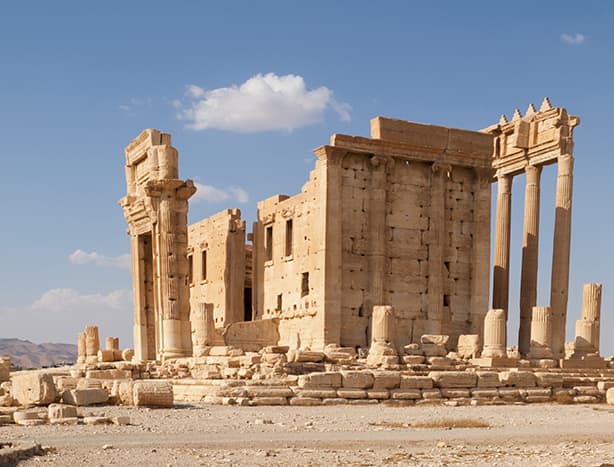Temple of Bel in Palmyra, Syria [Photo credit: © Joel Carillet/iStock]
As reported earlier this year, 10,000 specially modified digital cameras are being despatched to the Middle East by conservationists.
They hope to eventually use images from the Wi-Fi-enabled devices to print 3D models of archaeological sites and antiquities, amid fears that further precious treasures will be lost to Islamic State, such as those in Palmyra, Syria.
The Million Image Database Project is being led by the Institute for Digital Archaeology in Oxford.
The team plans to capture up to 20 million 3D images of ‘at-risk’ objects and architecture by the end of 2016.
Alexy Karenowska, director of technology at the Institute, this week told Amateur Photographer: ‘The project is progressing extremely well and we have completed our first 3D renderings.’
The news comes as Professor Maamoun Adbulkarim, dubbed Syria’s chief ‘Monuments Man’, warned that Palmyra will be flattened within six months if the international community fails to act, reported the Independent newspaper.
Appealing for help, the director-general of antiquities and museums for Syria this week told The Independent: ‘Do not leave Syrian archaeologists to fight this cultural battle alone. We need you.’
The £20 cameras are not only being used to record ancient sites and artefacts.
Crucial information gleaned from images – such as date, time and location – will be used to fight organisations that fund their activities by selling plundered treasures over the internet and falsely claiming they have been legitimately sourced.
Police may then be able to use a New York-based database to track stolen artefacts, to counter claims by those selling an object that it was obtained at a date long before 2015, for example.
Speaking in September, Karenowska said the team hope to collect one million images from the 10-milllion-pixel cameras by the end of this year.
Archaeologists have joined forces with heritage organisation UNESCO to put together a ‘hitlist’ of sites and are dealing with local people on the ground.
The project is spearheaded by Roger Michel, a long-time reader of Amateur Photographer and executive director at the Institute for Digital Archaeology.
In a letter to The Times, published in August, Michel wrote: ‘Palmyra is rapidly becoming the symbol of Isis’s cultural iconoclasm. If Isis is permitted to rewrite the history of a region that defined global aesthetic and political sensibilities, we will collectively suffer a costly and irreversible defeat. But there is hope.’
Project bosses compared their mission to a ‘digital take on the Monuments Men’.
The Monuments Men is a 2014 movie that centred on a mission to rescue art masterpieces from Nazi thieves.







